One of the main reasons people often fail to reach their goals is that they don’t track their goals. You have to understand goal setting is not a one-time work where you just write down your goals and then wait for things to happen. No, goal setting is more than that. You need to track your goals in order to make progress to achieve what you want.
If you can’t measure it, you can’t improve it.
Peter Drucker
Yes, Peter Drucker, the famous management consultant said it wisely that if you can’t measure something, you can’t improve it.
Take losing weight as an example. What is the first thing you need to do to lose weight? Well, you weigh yourself. You do the measurement.
And as you carry out your weight loss plan, what do you do? You track your weight, consistently. Maybe not every day, but at least every week.
From time to time, you measure your weight. You track how much weight you have lost or gained over time.
This is the act of measurement that we need to implement in every other area of our goals.
If you want to achieve your goals, you must track them. You must measure them so that you can tell if you are making progress.
And if you don’t track them, you will never know if you are moving forward or backward.
Plus, measuring and tracking your goals can motivate you.
You become what you think about most of the time, right? So if you track your goals, you are programming your goals into your subconscious mind more often.
Not just that, when you treat your goals seriously and you track them, you are telling yourself that your goals are important and you are committed to achieving them.
This is why you must track your goals.
But how do you track them? Here are 5 fabulous ways you can consider…
1. Bullet journaling
You may or may not have heard about the idea of a bullet journal. Basically, a bullet journal is a notebook or a journal that you use to track down everything that you do in your life.
It is a perfect way to track and measure your goals.
If you want to understand the concept of a bullet journal better, read this article from BuzzFeed.com.
A bullet journal is not a to-do list, not a planner, and not a diary too. In fact, a bullet journal is all of them. It allows you to track your goals, plan for what’s coming, measure your day-to-day operations, and can also work as a diary to record down things.
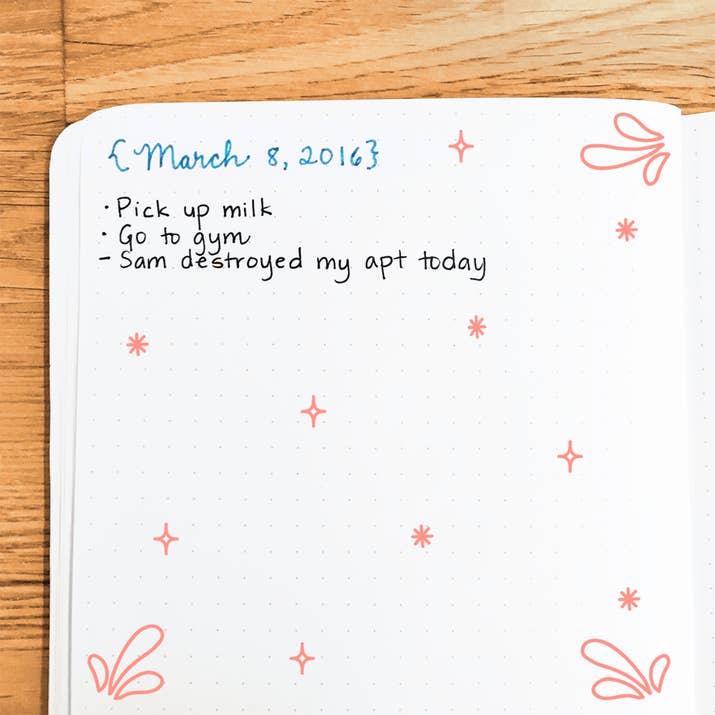

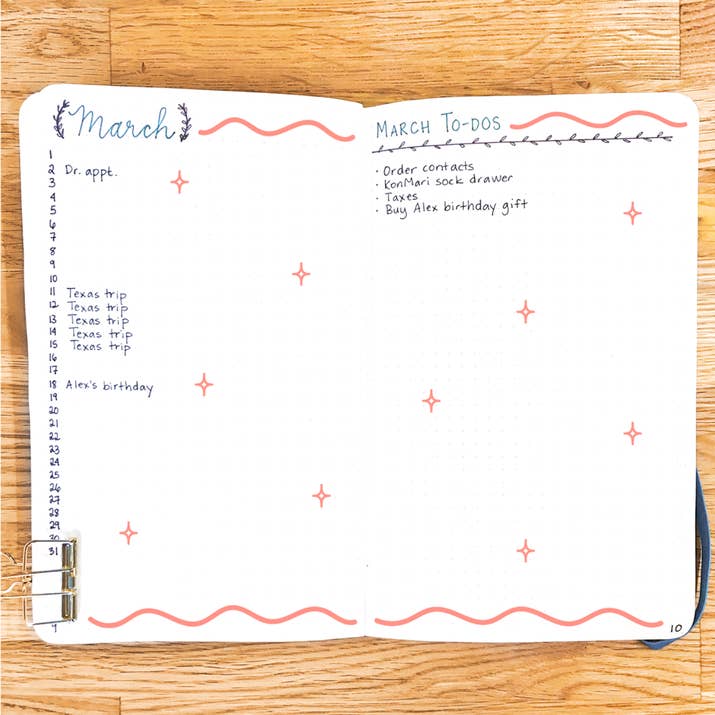
Again, the concept of a bullet journal is powerful. You should check out the explanation from BuzzFeed.com to learn more about the idea and example.
Bullet journal is a flexible tracking method. You can make it as complicated or as simple as you like.
You can make the bullet journal according to your own requirements. And, if the bullet journal method is not what you’re looking for, there are 4 more other ways to track your goals.
2. Using Charts
This is the old-school method to track your goals. I still remember the days when I use an Excel sheet to create graphs in my schooling days. Although it is old-school, the fundamental is the same and it works.
There are many methods how you can use charts to track and measure your targets. Below are some examples.
a) Tables and Numbers
If you are someone who loves numbers, this method will work best for you. Plus, if your goals can be quantified and required a lot of numbers to measure, this can be a great way to track them.
Below is an example of a table from LifeHack.org:
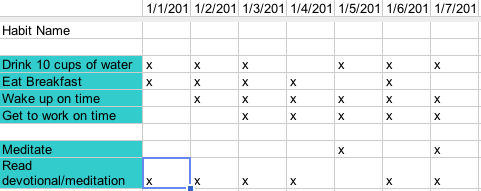
It is easy to create a table and use it to measure your goals. The key is to make the process as convenient as possible so that you will want to use the system for tracking.
The use of tables and numbers are more formal and you can find that many companies are using them as well.
I personally like this table-type tracking. But instead of using Excel, I just draw the table and write down my to-do’s and track my goals on paper.
b) Graphs
Graphs can be another great way to track your targets. You can use them to measure your spending, your earnings, revenues, and also growth rate.
When it comes to graphs, there are a couple of types. You can create the bar chart, pie chart, histogram, line chart, box plot, etc.
The key is to create a graph that can give you a clear visual of the progress of your goals.
Here are 2 examples I got from ToughNickel.com to show you how to tracking your progress in paying off credit cards:
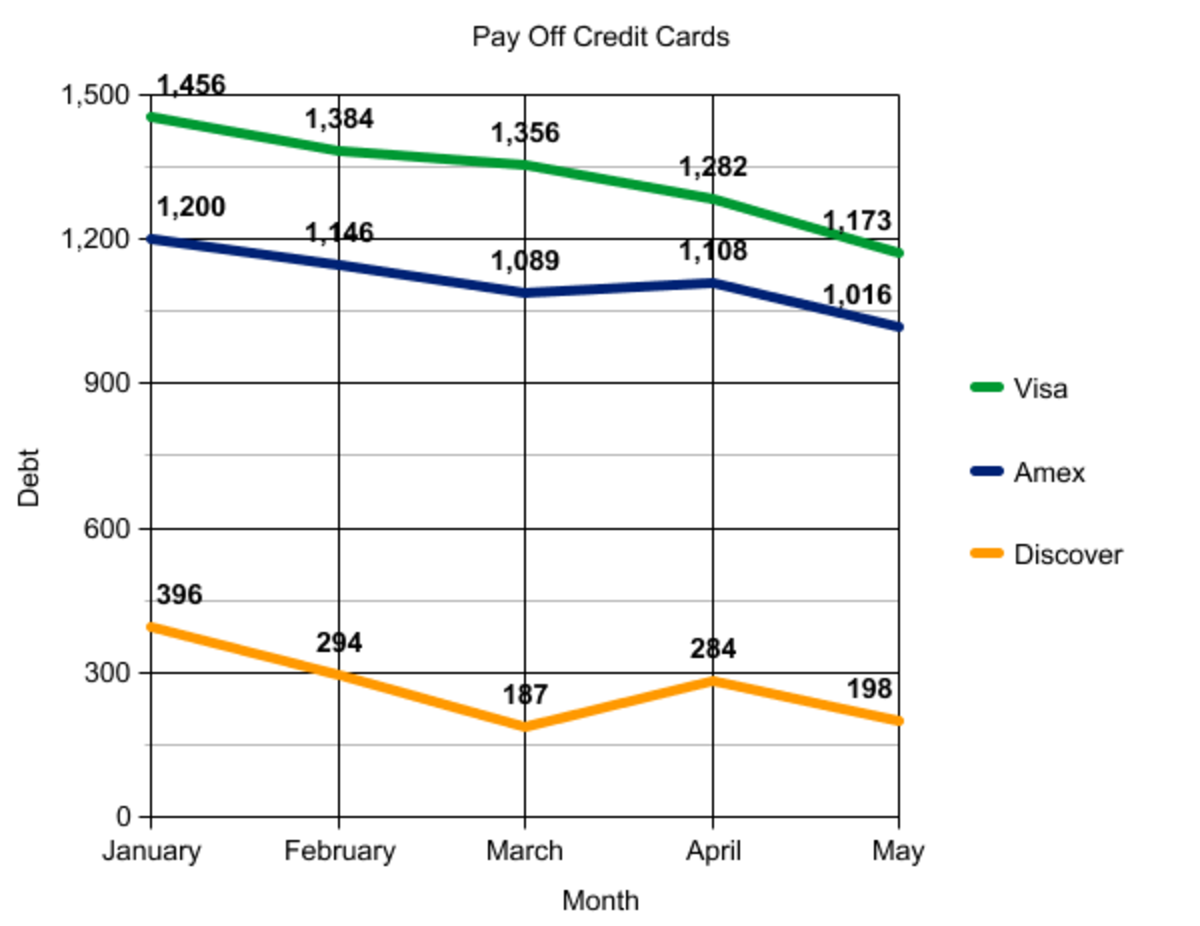
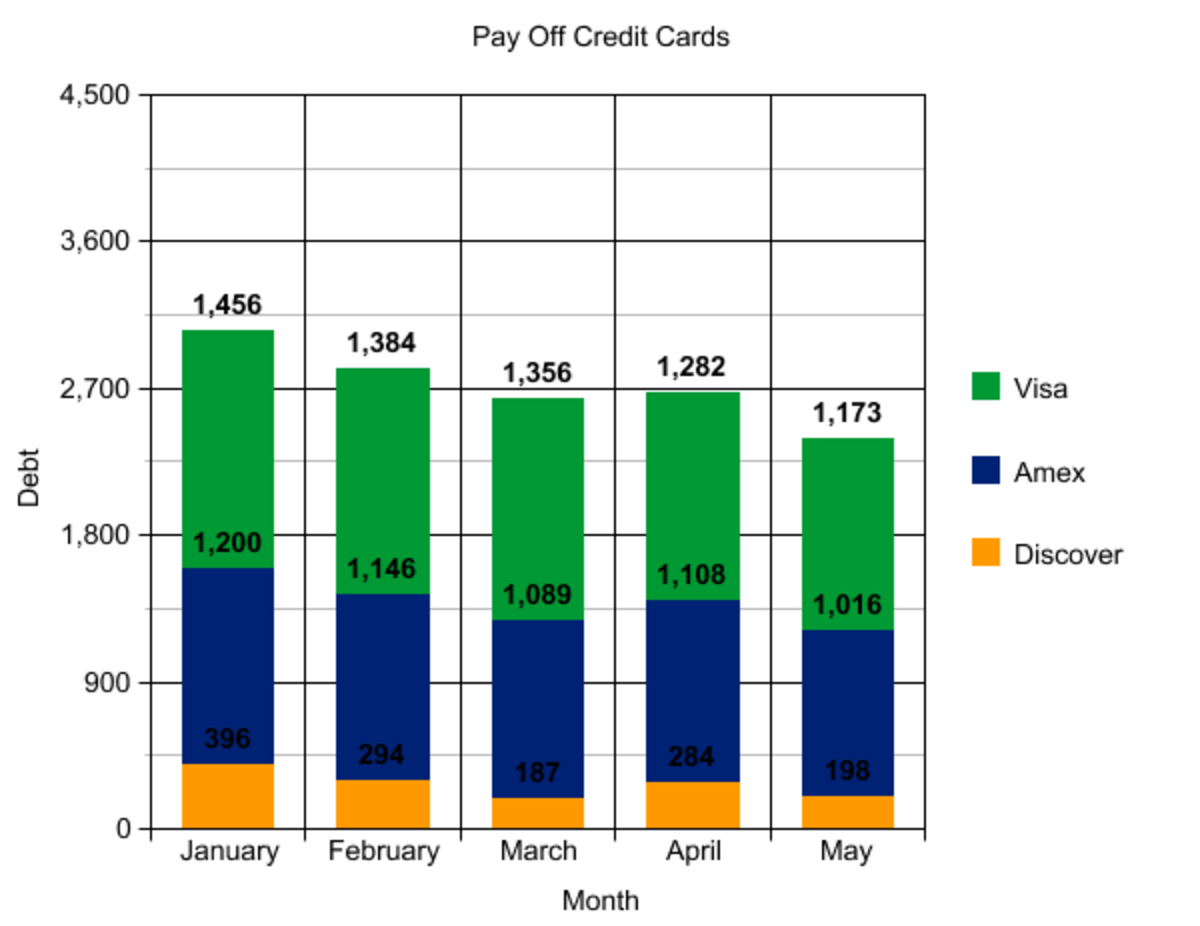
Just be creative when you make the graphs. And make sure you have fun and enjoy the process. It doesn’t need to be boring since you are tracking your goals, which are the things that you love to have in your life.
c) Sticker charts
Here’s an example of a sticker chart from Joe’s Goals:
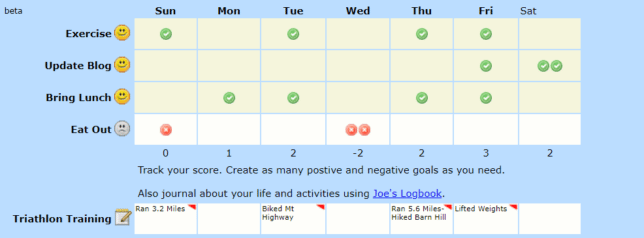
I like the idea of Joe’s Goals because it is easy to implement and straight to the point.
Take a look at the example above and then craft your own. You can buy some smiley-face stickers from your local stationery and start your tracking using this method.
Of course, if you don’t want to buy the stickers, just draw it. 🙂
3. Jerry Seinfeld Calendar Method
The Jerry Seinfeld Calendar Method is a powerful one. Read my previous article to fully understand this method.
Get yourself a calendar, and every day whenever you have performed the task, put a big red “X” on that day on the calendar.
And your mission is to keep the big red “X” chain going without breaking.
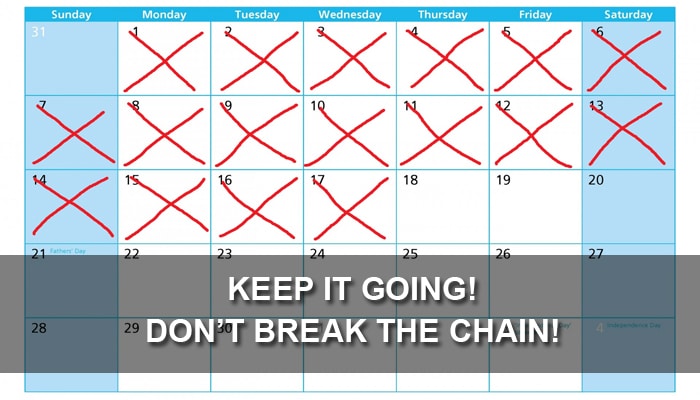
Never underestimate the power of this method. It may seem simple, but it is extremely effective. I’m using this method to track my writing habit and also my savings too.
For instance, every day when I successfully write 2,000 words, I will put a big “X” on my calendar right in front of my work desk. I can see the calendar and my progress each day.
It reminds me and drives me to want to continue to work and not to break the chain.
4. The Puzzle Style
ToughNickel.com also shares another fun and exciting way to track your goals, which is to gamify it using a tracking puzzle.
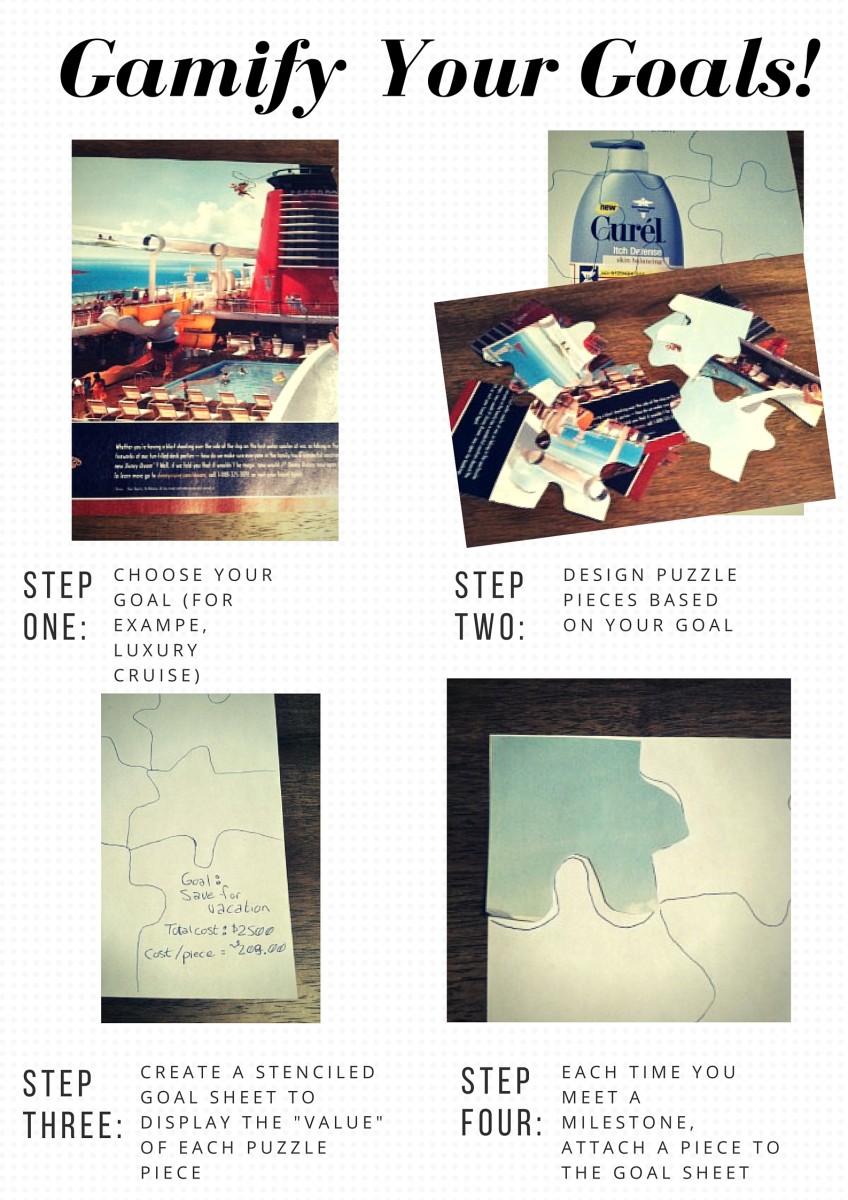
According to the article, here’s how you can create the puzzle:
- Find a large photo of your goal, so you can visualize what you want.
- On the back of the image, draw out puzzle pieces.
- Cut out each piece and count them.
- Divide your goal by the number of puzzle pieces. For example, if you’re trying to lose 20 pounds, divide the number 20 by the number of puzzle pieces. If you have 10 puzzle pieces, each piece would be worth 2 pounds.
- Every time you complete a segment of your goal (like losing 2 pounds), you can add one piece to the puzzle.
- When the picture is complete, you have completed your goal!
Tracking your goals using a puzzle is fun and engaging. The only downside is that you have to spend some time to create the puzzle.
5. Using App and Tools
I bet you have heard about Trello and Evernote, both are productivity tools that you can use to track and measure your goals.
Of course, there are many more Apps and tools available other than these two that I mentioned.
However, as a start, I believe that both Trello and Evernote are powerful enough to get you going.
Not only that you can create a to-do list using both tools, but you can also create a tracking system to measure your progress.
If you want to use Trello to do measure your progress, read:
Here’s a screenshot of the interface of Trello:

On the other hand, if you are using Evernote, check out this instruction:
How Evernote can Help you Achieve Your Goals
One of my favorite productivity gurus, Michael Hyatt, also uses Evernote. If you are yet to try out Evernote, you should definitely check it out.
Here’s a sample screenshot from Michael Hyatt’s Evernote:

How to Effectively Track Your Goals
No matter what methods or tools you use, you have remember one thing – you’re using the tracking system to help you track, hence, you want to make it as convenient as possible.
You don’t want to use a complicated and difficult platform where you have to spend 5 days to learn how to use it.
Tracking your goals is meant to be a fun and engaging process, not something mundane, tedious, or something that makes you hate to do.
Thus, here are a couple of tips to help you create you goals tracking system:
a) Make sure it is easy to track and record your progress
You want to make it so easy and convenient that you will want to do it every day, or at the very least, on a weekly basis.
Goal setting is a skill. And how do you improve your skill? You do it every day, like how athletes train themselves.
You don’t see Michael Jordan train for one day to win the championship, right? You have to engage with your goals as often as possible. This is why tracking is important.
b) Your tracking must display your main goals and tells you your progress
No matter what system you use, you don’t want to over-complicate the system with data or analysis. The main objective of your tracking system is to show you your main goals and your objective.
Think about it as a scoreboard in sports. In football, there are only 2 metrics shown on the board: the score on each team and time.
You can tell at first glance, which team is winning and how much time left or the game has proceeded. That’s a good scoreboard. It is easy to understand. Learn to create your own goals’ scoreboard here.
c) Track your goals on a consistent basis
This is the most important tips of all. Make sure you track your goals and update your system on a regular basis.
Most people fail to achieve their goals because they don’t track their goals. They fail to engage with their goals. As a result, they forgot about their goals and what they need to do.
And after a few days or weeks later, only then they discovered that they are not doing anything about their goals. But by that time, it’s too late. They will either have to give up, or start with a new project/goal.
Never let this happen to you. Track your goals and measure your progress on as regular as possible. Make your goals part of your life. When you do, you will achieve your goals.
Conclusion
Tracking your goals is extremely important. If you don’t track and measure them, you will never know if you are making progress and you will forget about them.
Always remember that goal setting is not a one-time work where you write them down for once. No, it is continuous progress where you have to track and measure until you get them done.
And the key to successful tracking your targets is to make sure that the system you use, regardless of whether you are using a bullet journal or using Evernote, you must make sure it is convenient to use.
The system should be easy to use and does not take much of your time. You don’t want to spend 3 months to understand how to track your goals, right?
Finally, just choose one of the methods above and make it your habit to review your goals on a daily or weekly basis.
Below are some other guides and resources to help you better achieve your goals:
- 55 Useful Tips How To Set Goals And Achieve Them
- 7 Easy Ways How to Hold Yourself Accountable for Your Goals
- 10 Effective Action Plan Templates You Can Use Now



[…] How to Track Your Goals: The 5 Fabulous Ways You Should Consider […]
[…] How to Track Your Goals: The 5 Fabulous Ways You Should Consider […]
[…] How to Track Your Goals: The 5 Fabulous Ways You Should Consider […]
[…] How to Track Your Goals: The 5 Fabulous Ways You Should Consider […]
[…] How to Track Your Goals: The 5 Fabulous Ways You Should Consider […]
[…] How to Track Your Goals: The 5 Fabulous Ways You Should Consider […]
[…] How to Track Your Goals: The 5 Fabulous Ways You Should Consider […]
[…] I personally use a custom Excel spreadsheet to track my progress. I also write down everything in my journal. If you want to learn more about how to measure your progress, read this article here. […]
[…] Read: How to Track Your Goals: 5 Fabulous Ways You Should Consider […]
[…] Read: How to Track Your Goals: 5 Fabulous Ways You Should Consider […]
[…] How to Track Your Goals: 5 Fabulous Ways You Should Consider […]
Great advice. Thanks for sharing this! For goal setting and progress tracking, you may also want to check out a product called GoalsOnTrack at https://www.goalsontrack.com. It’s designed for helping high achievers to set and track goals by organizing everything you need to do inside a comprehensive goal planning system.